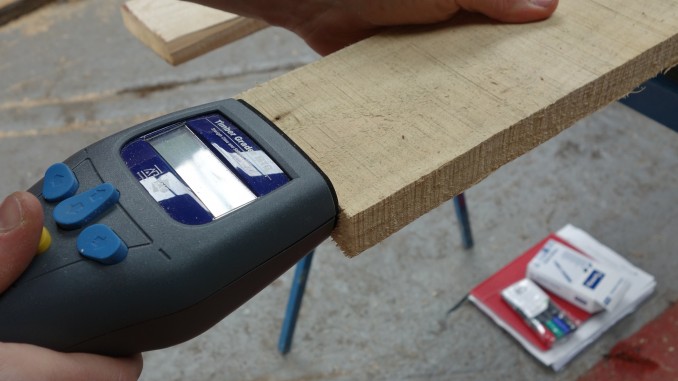
The strength grading of timber is not about the strength grade – it is about the properties of the timber. A strength grade (or, more strictly, strength class) like C16 and C24 is just a convenient set of properties that allow ease of trade. That is not to say it isn’t important – it’s just not the most important thing.
In order to build safely and efficiently with timber, engineers need to have information about the level, and variability, of the mechanical properties. This is achieved, by a combination of testing work (to establish the basic information) and a strength grading process to regulate, standardise, and provide confidence in the mechanical properties values to be used in design.
There are factors that affect the properties of sawn timber that are familiar to anyone who has worked with wood. These include the size and position of knots, the closeness, slope and spirality of the grain, the density of the wood, the ratio of earlywood and latewood in the rings, fissures, reaction wood, wane, rot and other damage. These are, however, not the only factors, and there are some that are less apparent, but often more influential. They include, the relative amounts of the main component molecules that make up the cell wall (lignin, cellulose and hemicellulose), the degree of crystallinity of the cellulose, the orientation of those crystals within the cell wall (microfibril angle), and the quantity and nature of extractives. These relate to the way the wood is used in the living tree, since the tree grows wood according to its own needs and circumstances. This is why timber quality varies according to environmental factors, such as climate and rainfall, and site factors such as ground conditions and forest management practices.
Strength grading is a non-destructive assessment that identifies and rejects the poorer pieces of timber to improve and guarantee the properties of what is passed. It uses information about the piece of timber to predict strength, stiffness and density without causing damage to the timber.
For historical and practical reasons, strength grading is done according to two approaches: visual strength grading and machine strength grading. The underlying principle is, however, the same for both. Visual strength grading works by assessing features such as the size and position of knots, the ring width, and the slope of grain. For machine grading, the range of predictive techniques has expanded from the original mechanical stiffness measurements (bending graders) to incorporate a range of sensing technologies including moisture content, density, x-ray scanning, acoustic velocity, slope of grain and digital image recognition. In both cases, the grading process is underpinned by destructive testing data.
Here it is worth pausing to remark that strength grading is not about knots and slope of grain – those are indicators of mechanical properties, so they are useful when visually grading timber – but they are not the primary criteria. A knotty piece of timber may pass when graded by a machine that uses other indicators, if those indicators point to the timber actually having good mechanical properties (despite the knots).
Irrespective of the construction material, an engineer needs values of strength, stiffness and density, to use in design calculations, that allow for the fact that there is never perfect knowledge of the properties of any individual piece. For the structural Eurocodes, the value for timber strength and density is taken as the value below which no more than 5% of the pieces in the grade are likely to fall. For stiffness, it is the mean value. These are known as characteristic values. Note that the density here is for things like connection strength and charring rate – not self weight – since we are concerned about low values, not high ones.
The process of grading ensures that the timber that is passed has, collectively, at least the properties specified for the grade. There will still be variation in the properties of the pieces of timber that have passed, but this has been quantified by the grading. Even though grading decisions are made piece by piece, the properties of a grade are statistical descriptions of the graded population. They are not, and cannot be, actual or minimum possible properties of any individual piece. This is why it is incorrect to regrade timber without taking special steps to account for the original grading.
A strength class is a standard set of strength, stiffness and density properties that provide a convenient means of specifying structural timber. So, when timber is graded, it is usually assigned to a strength class which it is at least as good as.
The strength classes C16 and C24, commonly used in the UK, are two of the strength classes defined in the European Standard EN 338. This standard contains many other classes including ones for temperate and tropical hardwoods, and for tension elements. Not all strength classes are in EN 338 (eg TR26, commonly used in the trussed rafter industry). These days hardwoods can be graded to C strength classes, (whatever the letters C and D supposedly stand for).
The EN 338 strength classes are just a convenience for general trade. In Europe, any organisation can define their own strength class, if their test data supports it, better suited to the timber resource or the application. The properties of timber can also be directly specified in the Declaration of Performance without reference to a strength class at all. Sadly, that there is wide, convenient, choice of grades that can be used seems not to be understood by the European Commission.
For a detailed description of the current basis of strength grading in Europe see Ridley-Ellis, D., Stapel, P. & Baño, V. “Strength grading of sawn timber in Europe: an explanation for engineers and researchers” Eur. J. Wood Prod. (2016) 74: 291. doi:10.1007/s00107-016-1034-1

Leave a Reply
You must be logged in to post a comment.